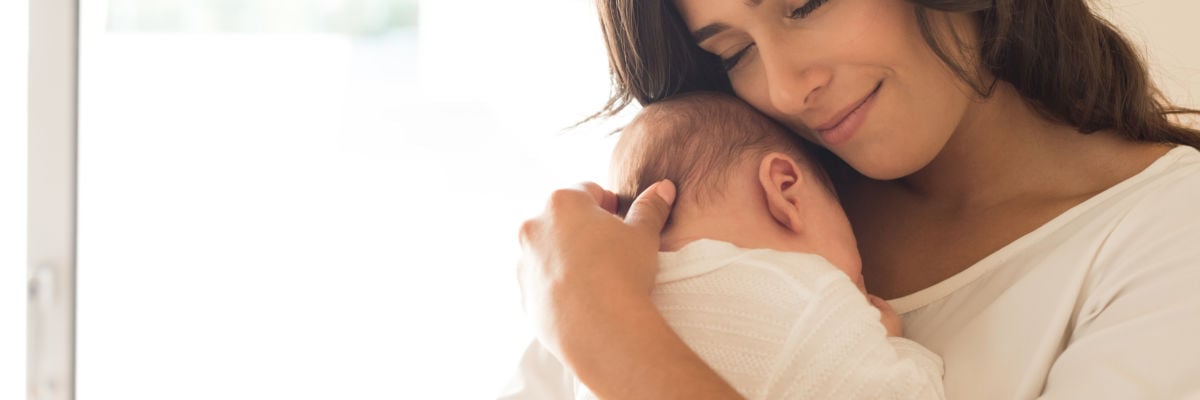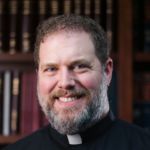
“But Mary kept all these things, pondering them in her heart.”
We can do no better than this.
In the world of the internet, which some people seem to think is the real world, Catholics can never say anything nice about Mary without an angry troll of some sort—claiming the mantle of biblical authority—jumping in to say we should be talking about JESUS (all caps, of course) instead, and that all this talking about and thinking about Mary is missing the point. But if we’re looking to the real Mary, it’s pretty clear that she always directs us to Jesus. And this is no competition, but a deepening of our relationship with Jesus, for with Mary we can “ponder these things” in our hearts. We can experience them anew not just as theological or doctrinal principles that must be believed, but as historical moments touching real people in time and space.
St. John Paul II spoke about the rosary as the “school of Mary,” which is just to say that meditating on the mysteries with Mary brings us ever deeper into contemplation of the mystery of Christ. No Son without the Mother, after all.
This is what celebrating Our Lady’s divine maternity is all about. It’s one of the four great Marian dogmas of the Church, along with Mary’s virginity, her immaculate conception, and her assumption. This was defined long ago at the Council of Ephesus in 431: to deny that Mary is the Mother of God, or the Theotokos, God-bearer, would be to deny that Jesus is God.
Various figures wanted to suggest that Jesus was, in the process of birth, temporarily not God, or that he became God only after birth, or that he merely appeared to be God. But the Fathers understood intuitively that for the Incarnation to be true, and for it to be truly salvific, the unity of the divine and human natures had to be permanent and binding. If God the Son was not born of a human mother—if he shirked this basic reality as something beneath him—he could hardly claim to have embraced and sanctified the fullness of human nature.
Mary is “Mother of God” in that she is the mother of Jesus, who is God. She is not the mother of his divine nature, which is, as the creeds remind us, “begotten of the Father before all worlds.” She is the mother of his human nature. But, because his human nature is inseparably united with his divine nature, we can and must say this strange, impossible thing: Mother of God.
This is only the beginning in the list of “impossible” things that Catholics believe—things that to the world must appear utterly mad.
We are still mourning the death of Pope Benedict XVI. In the opening chapter of his masterful Introduction to Christianity, a younger Joseph Ratzinger tells the story, recounted by another philosopher, of the clown attempting to warn a town against a coming fire. The clown shouts, he whispers, he gesticulates, he cries, but everything he does seems to the people simply part of the act. They point and laugh and move on with their business. Is this, young Ratzinger wonders, the state of the theologian today? Or perhaps the state of the Christian in general? How can we appear credible to the modern world? Is it simply a matter of removing the makeup, dressing in plain clothes, and appearing like everybody else? Removing all the things that strike our hearers as ridiculous? Or is it rather that the message itself carries a kind of absurdity or impossibility that cannot directly translate without the infusion of supernatural faith?
Christianity starts from a radical encounter with the Word made flesh. As Pope Benedict tells us, any attempt to translate this event into something else—into some economic or social principle, or some vague feeling—ultimately vacates its meaning. It does all come down to this reality that we recall on the Octave day of Christmas: the Son of God and his human mother. We try to meet them and to know them in this life, but we will see them in the next, as our departed Holy Father knew well. And here, in a new calendar year, we do well to remember that there is no avoiding this encounter. It may be at times painful. Love is at times painful. But it is good.
In the closing prayer of his encyclical Deus Caritas Est, Pope Benedict entreats Our Lady: “Teach us to know and love him, so that we too can become capable of true love and be fountains of living water in the midst of a thirsting world.”
With Mary’s help and guidance, may we have the grace to echo the Holy Father’s last words in this life—and no doubt his first words in the next: “Jesus, I love you.”



